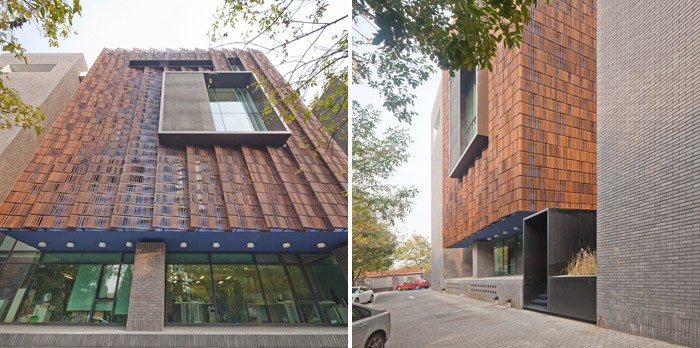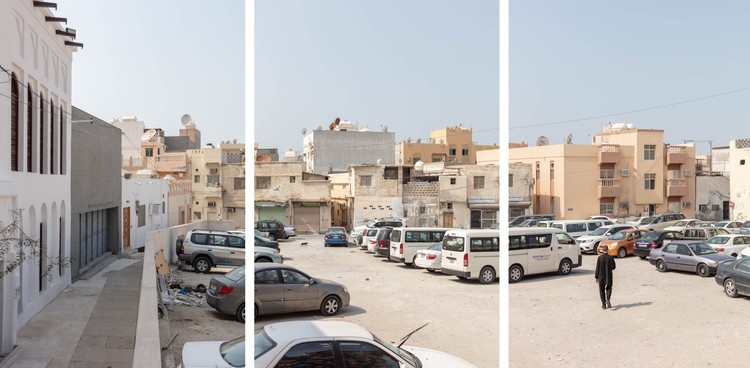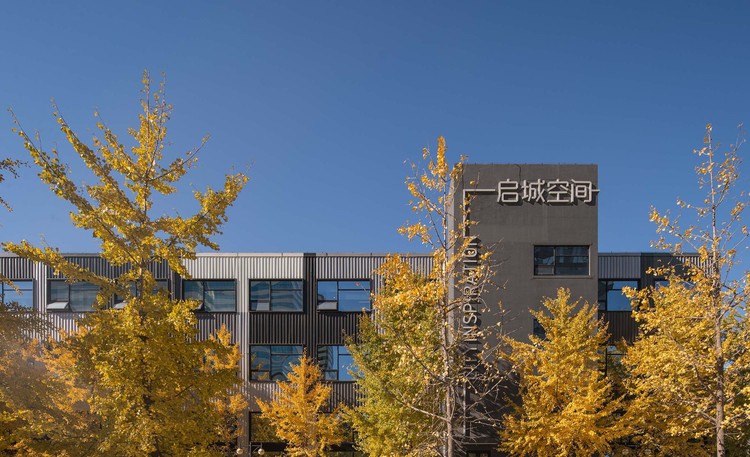Substrate Factory Ayase Aki Hamada Architects
2017-05-24 19:00
架构师提供的文本描述。这是一个扩展到现有的电路板工厂,位于阿苏吉基地附近。原计划作为车间的一楼面积已改为供当地社区使用的陈列室和多用途空间,因此需要多功能性和开放性。此外,由于目前使用的厂房的未来重建正在考虑之中,我们试图设计一个允许多种用途的扩展,同时根据用户的积极参与提供可调整的空间和程序。这座建筑是由一个框架结构模型构成的,它的设计是为了适应不同的条件和要求,以及通过提高其可调整性和可更新性来允许微调的配件和硬件元件。这些建筑空间的特点是构图并置这些元素,而不失去它们的原始特征。
Text description provided by the architects. This is an extension to an existing circuit board factory located near Atsugi base. The first floor area, which had originally been planned as a workshop, was changed to be used as a showroom and a multi-purpose space for local community, and therefore versatility and openness were required. Furthermore, since future reconstruction of the currently used factory building was under consideration, we tried to design an extension allowing for multiple uses, while providing adjustable spaces and programs in accordance with the active involvement of users. This building is constructed of a frame structure model designed to accommodate various conditions and requirements, as well as fitting and hardware elements allowing fine tuning by improving their adjustability and renewability. Those spaces in the building are characterized by the composition juxtaposing those elements without losing their original characteristics.
该遗址被归类为半工业区,工厂和住宅并存.工厂是城市环境中的一个封闭项目,主要由工业材料外墙覆盖的钢框架结构建造;为了保持隐私,房屋也有关闭的倾向。因此,这两个项目几乎没有机会相互融合-从积极的意义上讲。附近的房子有一个日常生活,家庭成员,杂物,洗衣或遛狗。然后,我们和客户一起思考,一个工厂应该如何站在这样的邻居的日常风景旁边。结果,我们想出了一个“开放式木结构工厂”的形象,它将一家工厂和一所房子之间的关系进行了调解。我们期望这个地方会被当地社区所接受,成为人们聚集一堂的地方,同时在不同人民的积极参与下日复一日地变化。
The site is categorized as semi-industrial zone, where factories and residential houses coexist. A factory is a closed program in a city environment, mostly constructed of steel frame structure covered by exterior walls made of industrial materials; a house also has tendency to be closed in order to maintaining its privacy. As a result, those two programs have little chance to get mingled with each other—in a positive sense. The house adjacent to the site has a daily life in which family members sundry the laundry or walk a dog. Then, together with the client, we thought about how a factory should be standing next to such everyday scenery of the neighborhood. As a result, we came up with an image of an “open wooden-structure factory” that mediates the relationship between a factory and a house. We expect that this place will be accepted by the local community as a place where people gather, while changing day by day with the active involvement of various people.
一旦我们提出了“开放式木结构工厂”的形象,下一个挑战就是在不牺牲居住环境和舒适水平的情况下,切实实现建筑的结构和结构完整性。然后,我们为各种元素设置了一个程序,通过根据条件自适应地修改它们来确定这些元素-这个程序被命名为
Once we came up with the image of the "open wooden-structure factory", the next challenge was to practically realize the building in terms of structural and constructional integrity, without sacrificing the living environment and its comfort level. Then, we set up a program for various elements to be determined by adaptively modifying them according to the conditions—that was named as the "adaptive model". We made final decisions for the output variations in terms of constructional and aesthetic aspects; there are numbers of possible forms in parallel existence, with freedom of going back and force within the process by altering parameters. The living layer is configured with movable elements to ensure possibilities of various conditions of the space.
另一方面,考虑到各种可能性的结构证据给了环境层一定的限制,因为它是使用者不容易进入的区域,然后根据美学的观点作出被认为是有效的最后决定。虽然我们没有进行物理模型研究,但我们采用了一种参数建模方法,允许自由处理信息;这使我们能够以更高的精度同时研究空间的审美和结构观点的条件。在这个项目中,重要的是允许使用通用的3D CAD和编程来自由建立输入格式,而不是在我们的设计过程中使用预定义输入格式的应用程序,如bIM软件。即使是一个小型的设计室,也可以利用某些技术来增加建筑设计的深度和密度,并对各种变化进行客观的比较和研究。在这一过程中,建筑和美学标准将具有更重要的意义,而这正是小型设计室的作者仍然存在的地方,这是最后一个无法客观或口头解释的堡垒。
On the other hand, the environmental layer was given certain restrictions derived from structural evidences considering various possibilities, because it is the area not easily accessible by the users and then supposedly valid final decision was made based on an aesthetic point of view. While we did not conduct a physical model study, we applied a method of parameter modeling allowing a free handling of information; this enabled us to simultaneously study the conditions of the space in terms of aesthetic and structural point of views in higher precision. In this project, it was important to allow free establishing of input format by using general-purpose 3D CAD and programing, rather than utilizing an application such as BIM software with predefined input format for our design process. It is possible even for a small design office to increase the depth and density of architectural design by utilizing certain technology, with objective comparisons and studies of a vast number of variations. During this process, architectural and aesthetic criteria would achieve more significant meanings, and this is where the authorship of small design offices remains, which is the last stronghold that cannot be explained objectively nor verbally.
 举报
举报
别默默的看了,快登录帮我评论一下吧!:)
注册
登录
更多评论
相关文章
-

描边风设计中,最容易犯的8种问题分析
2018年走过了四分之一,LOGO设计趋势也清晰了LOGO设计
-

描边风设计中,最容易犯的8种问题分析
2018年走过了四分之一,LOGO设计趋势也清晰了LOGO设计
-

描边风设计中,最容易犯的8种问题分析
2018年走过了四分之一,LOGO设计趋势也清晰了LOGO设计












































































































































